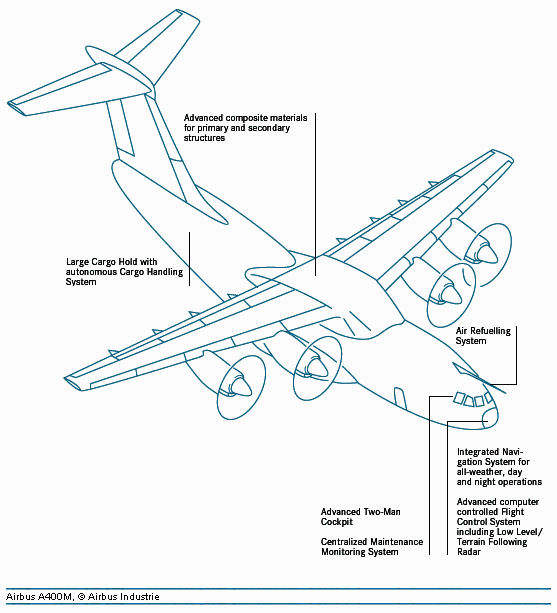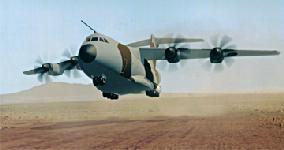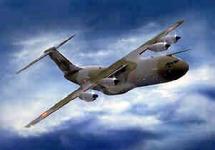FAS |
Military |
DOD 101 |
Systems |
Aircraft |
ROW ||||
Index |
Search |
Join FAS




A400M Future Large Aircraft - FLA
Avion de Transport Futur - ATF
The A400M is a military transport aircraft designed to meet the requirements of eight European Air Forces (Belgium, France, Germany, Italy, Portugal, Spain, Turkey and the United Kingdom) to replace their fleets of C-130 Hercules and C-160 Transall. These aircraft are currently in service and will become obsolete in the next century. With the A400M, the goal is to standardize Europe's fleet of tactical transports. The relatively larger production run allows greater production rates which will then reduce the prices per aircraft for airframe, engines and spare parts. Moreover, this will provide for an improved interoperability level and the option of consolidating major maintenance operations in a joint industrial consortium. The harmonized military requirements of eight countries have been published in the "European Staff Requirement" (ESR). The total number of aircraft required by these countries amounts to approx. 300.
CASA, Aerospatiale, Airbus, Alenia, British Aerospace, DASA, Flabel, Ogma and TAI are taking part in A400M (anteriormente FLA, Future Large Aircraft) programme under the management of Airbus Military. The new company's responsibility is to manage the development program of the Airbus A400M military transport, formerly known as the FLA (Future Large Aircraft). The new designation denotes that the aircraft is the first of a new series of military transports, complementary to the existing range of civil airliners produced by Airbus Industrie.
The A400M has a classic high wing configuration, fuselage with ramp and large rear door, high flotation retractable landing gear and "T" tail. Its four turboprops provide it with a cruise speed of 0.72 mach at altitudes of up to 40,000 feet. Its cabin is 22.65 m long, including the ramp, 4 m wide at floor level and 3.85 m high, making it suitable for the transport of bulky cargo like helicopters, heavy vehicles, missile batteries and light vehicles placed side by side. The A400M will offer longer range, higher payload and capacity, faster cruise speed, and improved levels of tactical performance compared to the aircraft it will replace. Through the use of proven advanced technology developed by Airbus Industrie and its partner companies, the A400M will also bring commercial levels of reliability and cost-effectiveness to military airlift operations. In June 1999 the M138 engine won in Airbus Industrie's downselect on engines to power its emerging A400M military transport. The M138 is jointly developed and manufactured by Snecma (France), MTU M�nchen (Germany), FiatAvio (Italy) and ITP (Spain). The M138's core is identical to that of Snecma's M88, which powers the French Rafale combat aircraft. The M138 also incorporates technologies matured under the Advanced Ducted Propfan (ADP) demonstrator project. Delivery of the first series aircraft could be made in the year 2005. An important argument in favor of the A400M is the changed geopolitical situation on account of which crisis-oriented and quick-reaction air transport increasingly gains in importance. As a result, the demand for transport aircraft for humanitarian and military applications, as for instance for UNO and NATO missions, continues to grow. Another reason lies in the fact that transporters such as the Transall C-160 and the Hercules C-130 which today are in operation throughout Europe will gradually have to be replaced with new aircraft.The Strategic Defence Review (SDR) issued by the British Government in July 1998 made a very strong case for the need for a dramatically improved air transport capability to support the proposed Joint Rapid Reaction Forces. However, as of early 1999 the French Air Force was considering a range of options for a new military transport aircraft, including the Airbus Future Large Aircraft, the Russian An-70 and a mix of C-17s and C-130Js. Lockheed Martin has proposed the C-130J-30 to Belgium, France, Spain and the UK in competition with the proposed European Airbus A400M. The European home market for FLA represents some 300 aircraft. Outside Europe a sizeable market can be identified for a military transport aircraft in the FLA category.
Specifications | ||
| Dimensions | ||
| Length | 42.00 m | 137� 9" |
| Wing Span | 41.40 m | 135� 10" |
| Cabin Length | 22.65 m | 74� 4" |
| Cabin Height | 3.85 m | 12� 8" |
| Cabin Width | 4.00 m | 13� 1" |
| Weights | ||
| Maximum Take-off Weight | 110.850 kg | 244,378 lb |
| Maximum Landing Weight | N/A | |
| Maximum Payload | 25,000 kg | 55,115 lb |
| Maximum Fuel | N/A | |
| Number of Fully Equipped Troops | 105 |
|
| Number of 88"x108" Pallets | 9 |
|
| Performances | ||
| Maximum Speed | 422 ktas< | |
| Maximum Cruising Speed | Mach 0.68 | |
| Take-off Distance (S/L, ISA, MTOW at 50ft) | < 1,067 m |
< 3,500� |
| Landing Distance (S/L, ISA, MTOW at 50 ft) | < 1,067 m | < 3,500� |
| Maximum Range | 7,593 km |
4,100 nm |
| Range with Full Load | 4,000 km |
2,100 nm |
| Power Plant | ||
| Number and Model | 4 (BR700-TP) |
|
| Power per unit | 9500 SHP / 10,000 CV |
|






Sources and Resources
- Military airlift - prospects for Europe WEU Parliamentary Assembly Document 1484 6th November 1995
FAS |
Military |
DOD 101 |
Systems |
Aircraft |
ROW ||||
Index |
Search |
Join FAS
http://www.fas.org/man/dod-101/sys/ac/row/fla.htm
Maintained by Robert Sherman
Originally created by John Pike
Updated Tuesday, September 21, 1999 10:18:15 AM